We offer complete restaurant and kitchen exhaust system cleaning per NFPA standards.
Our team provides experienced kitchen hood, exhaust, and full restaurant cleaning.
We maintain your restaurant and kitchen cleaning so you can keep the operations running.
Aim Hood Cleaning is a reputable kitchen exhaust services company We comply with the standards of the National Fire Protection Association (NFPA) and the have relevant certifications that comply with local fire codes and regulations.
Our technicians hold certifications in kitchen exhaust cleaning, demonstrating proficiency in the latest technologies and methods.
Additionally, our company has a proven track record of experience in commercial projects and positive customer testimonials that reflect our reliability and professionalism.
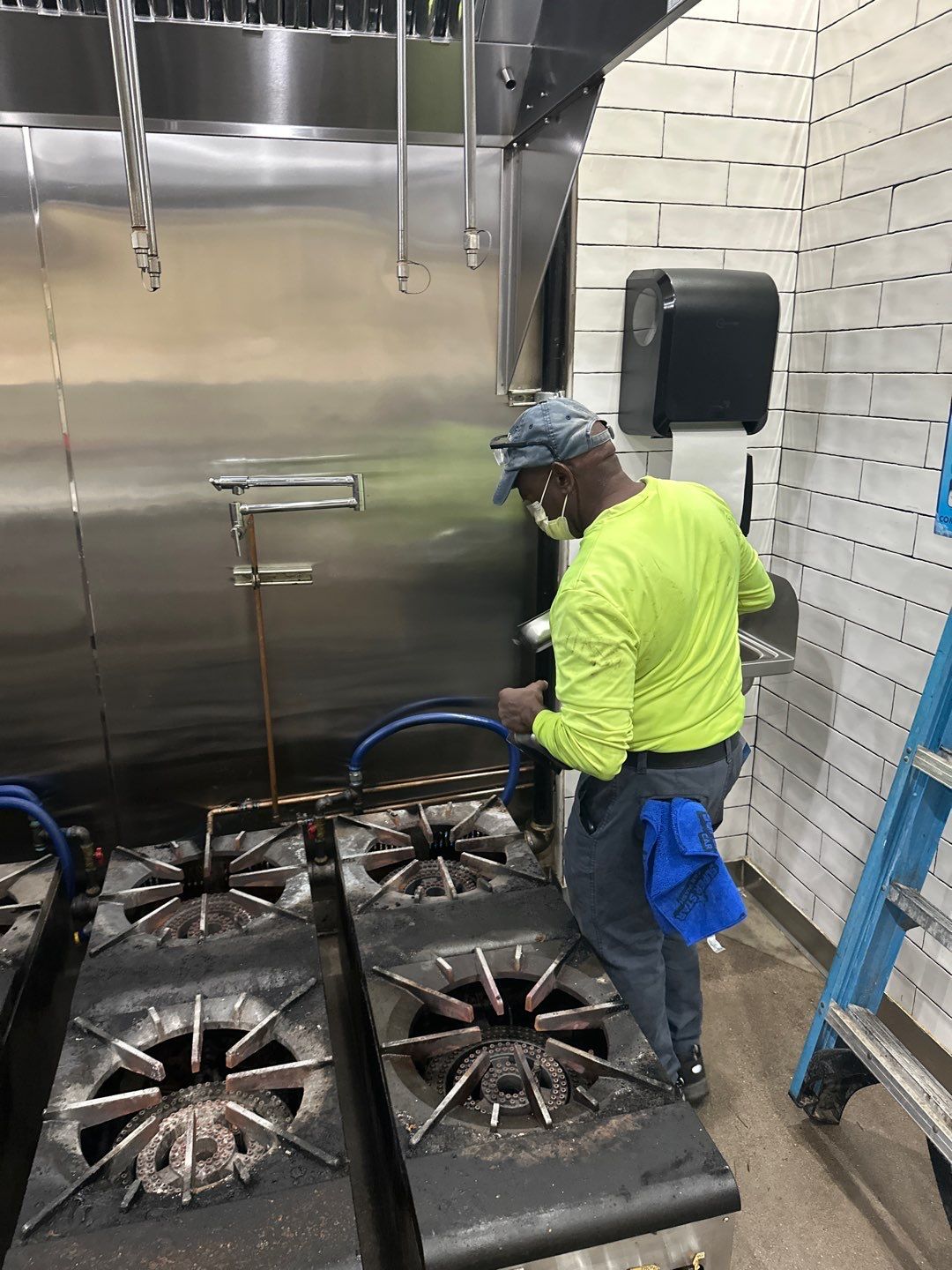
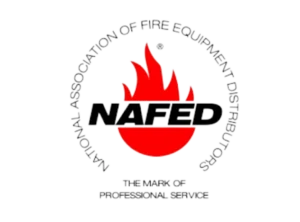
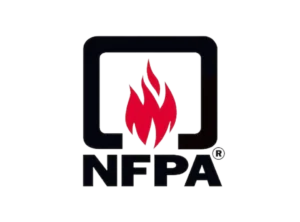
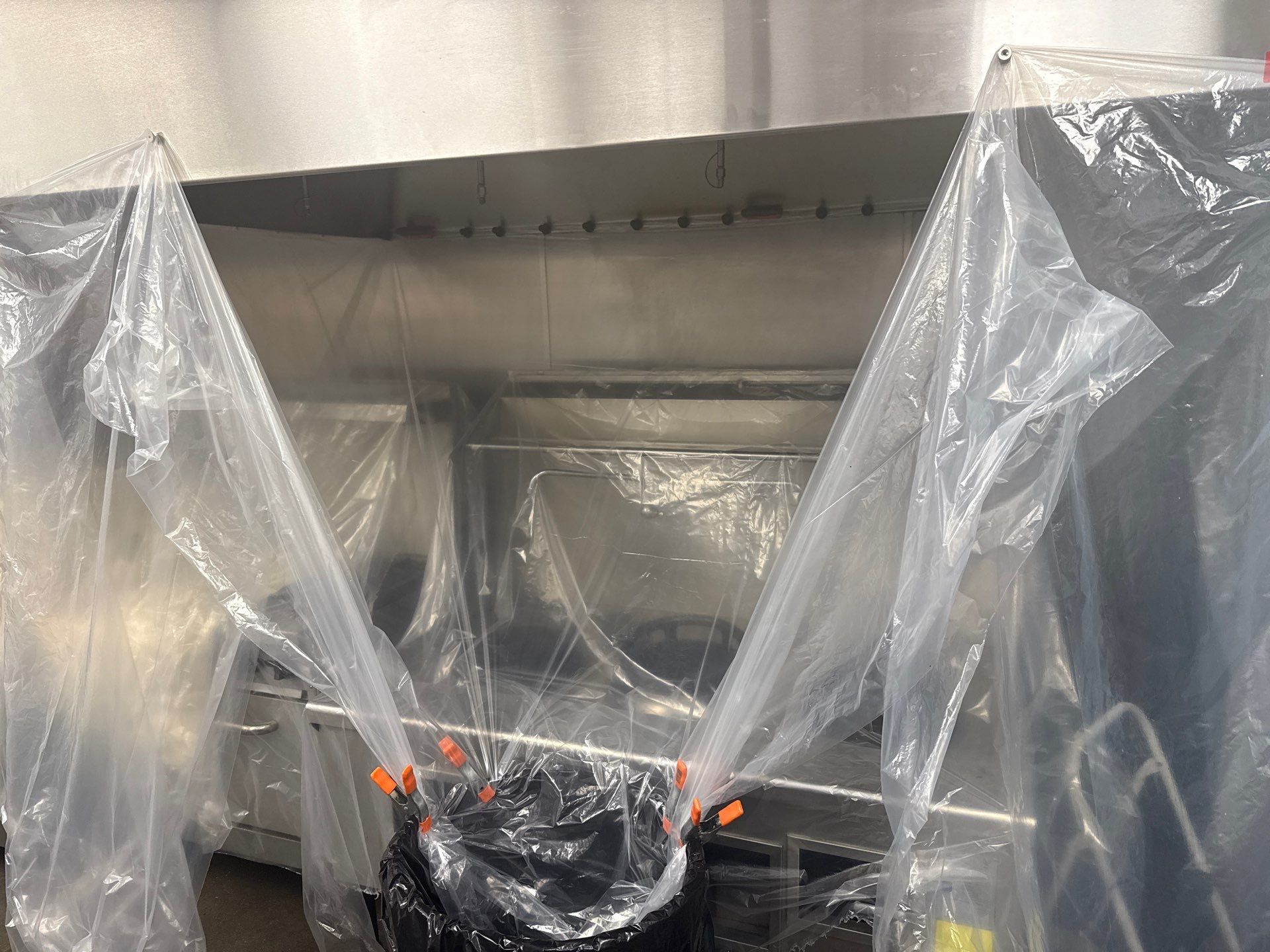
A commercial kitchen exhaust hood cleaning service involves specialized cleaning of the ventilation systems, including hoods, ducts, and exhaust fans, to remove grease buildup and prevent fire hazards.
This service is crucial for maintaining compliance with National Fire Protection Association (NFPA) standards and ensuring the safety of commercial kitchens.
Give us a call to get your kitchen exhaust system inspected and/or cleaned.
A clean kitchen exhaust hood is not just a detail; it is a necessity. When you consider that cooking equipment plays a role in 61% of restaurant fires, according to the National Fire Protection Association (NFPA), the implications of neglecting this duty become glaringly obvious. Grease buildup in exhaust hoods acts as kindling, making proper cleaning essential for every kitchen manager. Removing grease regularly significantly reduces fire risk. This alone can be the difference between a thriving business and catastrophic losses.
Moreover, the impact of poor air quality extends beyond the threat of fire. In kitchens where grease and smoke cling stubbornly to hoods, the air becomes thick and uncomfortable, potentially leading to health issues among staff. An executive chef once shared his perspective: “After we started regular exhaust hood cleanings, the air in the kitchen noticeably improved, and my team stopped complaining about breathing issues.” Such testimonials highlight how routine maintenance fosters a healthier work environment.
Additionally, regular maintenance offers impressive benefits beyond fire prevention and air quality improvement.
The longevity of your kitchen equipment hinges on cleanliness as much as it does on usage. Regular cleaning prevents grease accumulation that leads to excess wear and tear on exhaust systems. Think of it similar to how consistent oil changes make your car run smoother over time. When grease isn’t consistently removed, it exerts pressure on parts of the system which can lead to breakdowns or costly repairs down the line. By investing time in routine exhaust hood cleaning, you're safeguarding against immediate dangers while ensuring that your equipment lasts longer.
To further emphasize this point, research indicates that maintaining clean exhaust systems can extend their lifecycle by up to 30%. This statistic underscores how simple practices have profound effects on both economy and safety within commercial kitchens.
When it comes to kitchen exhaust hoods, neglecting maintenance brings a cascade of issues that compromise efficiency and safety.
Restoring order through regular cleaning activities transforms what could be a chaotic environment into a smoothly running operation. Recognizing the interdependence between maintenance practices and safety outcomes helps create spaces that are compliant with regulations and ultimately safer for everyone involved.
With these insights into the importance of routine upkeep, it's important to explore the specific steps involved in ensuring your kitchen remains safe and efficient through effective cleaning methods.
The cleaning process for commercial kitchen exhaust hoods is not only thorough but also systematic. It starts with an important step that sets the stage for everything that follows: initial inspection. During this phase, technicians meticulously assess the level of grease and grime buildup. It's like a doctor checking a patient's vitals before proceeding with treatment; they need to understand the extent of the problem first. Often, they will document their findings with photographs to create a clear "before and after" comparison, which is invaluable for record-keeping and demonstrating the effectiveness of their work.
With a comprehensive understanding of the hood's condition, technicians move on to the next critical phase: disassembly.
After documenting the initial inspection, technicians proceed with Step II: Disassembly. This is where the real action begins. Key components such as filters and grease traps are carefully removed from the exhaust system, allowing access to every corner of your kitchen hood that could potentially harbor hazardous grease deposits. As these pieces are extracted, they are soaked in specialized degreasing solutions that are tough on grime yet safe for your equipment.
A restaurant owner once shared, “Watching the professionals take apart and cleanse each section of the hood was like watching a well-rehearsed dance—every movement precise and purposeful.” This portrayal really encompasses the careful choreography involved in navigating intricate machinery while ensuring safety standards.
Now that each component has been meticulously disassembled and treated, it’s time for what many would consider the heavy lifting of the operation.
Following disassembly comes Step III: Deep Cleaning. Technicians utilize industrial-grade degreasers alongside hot water pressure washers to get into every crevice of the exhaust system, including ducts and fans. This rigorous cleaning not only eradicates grease and debris but also aids in maintaining airflow efficiency, essential for proper ventilation in busy kitchens. It’s akin to giving your kitchen an internal makeover; you’re revealing unseen areas that play a crucial role in overall performance.
With all parts thoroughly cleansed, it’s now time to see how it all fits back together.
Once everything is cleaned and dried, we arrive at Step IV: Reassembly and Final Inspection. Here, technicians carefully reassemble all components with attention to detail that's crucial for ensuring functionality. They then conduct a final inspection to confirm that everything operates smoothly and adheres to relevant safety standards. It’s at this stage that any issues are addressed, ensuring optimal performance of your exhaust system moving forward.
This entire process exemplifies why regular professional cleaning is paramount; it protects your equipment and promotes a safe working environment for kitchen staff. Prioritizing professional services ensures compliance with fire safety regulations—both vital for any successful commercial kitchen operation.
Understanding the complexities involved in this cleaning process sets the stage for choosing the right team that can deliver trusted results efficiently.
Not all cleaning services offer the same level of expertise and reliability. It's important to do your homework before committing to any company. First and foremost, consider whether the technicians are certified. Look for credentials from recognized organizations, such as the International Kitchen Exhaust Cleaning Association (IKECA). Certification signifies that the technicians have undergone training specific to kitchen exhaust cleaning and are knowledgeable about fire safety standards.
Another crucial step is to explore customer reviews. Authentic testimonials from previous clients can provide insight into a company’s reliability and thoroughness. For example, a customer on Google Reviews remarked, "High Tide Fire Protection is meticulous and professional. Our kitchen has never been safer." This kind of feedback reflects a commitment to quality that you want in a cleaning service.
Ensuring compliance with safety regulations is equally vital. You need to confirm that any service you consider adheres to NFPA standards and local fire codes. Compliance isn't just about following rules; it guarantees that your kitchen operates safely and efficiently. An unqualified service could overlook critical guidelines, potentially putting you at risk.
Furthermore, look for services that tailor their offerings to meet your unique needs. Customization is key when it comes to maintaining your kitchen's cleanliness and safety. A one-size-fits-all approach simply won’t cut it. Aim Hood Cleaning, for instance, excels in providing flexible scheduling options designed specifically for busy commercial kitchens. This flexibility minimizes downtime while ensuring rigorous compliance with safety standards.
Lastly, don't underestimate the importance of communication and support from the cleaning service you choose. A reputable company should be willing to discuss your needs openly and answer any questions you may have about their processes or certifications. This rapport builds trust and ensures that you're making an informed decision tailored to the safety of your kitchen environment.
By considering these essential elements—certifications, customer reviews, regulatory compliance, service customization, and open communication—you can ensure a trustworthy choice that enhances the safety of your kitchen operations.
Regular maintenance is crucial to keep the exhaust hood working efficiently. The exhaust hood plays a major role in eliminating smoke, odors, and grease—essentially helping to keep your kitchen environment safe. Yet, it often gets overlooked until something goes wrong. Keeping on top of its care can save you from expensive repairs and dangerous situations down the line.
Filters should be cleaned weekly or even daily, depending on the volume of cooking in your kitchen. In a bustling commercial kitchen with high productivity, daily cleaning becomes vital. A simple yet effective method involves soaking the filters in hot water mixed with a degreasing solution to cut through the grease that accumulates over time. After soaking, rinse thoroughly and allow them to dry completely before reinstallation. A clean filter means better airflow and efficiency, translating into both safety and savings in energy costs.
Just as crucial as the filters are the ducts and fans; performing monthly visual inspections can help catch potential problems early. While these components often escape notice during daily operations, neglecting them can lead to major headaches. Check for any visible grease buildup inside the ducts and ensure that there’s no obstruction affecting airflow or fan functionality. If you notice excessive debris or strange noises from the fan, that could signify an issue needing immediate attention.
Remember, keeping ducts clear not only improves efficiency but also minimizes fire hazards—a vital aspect within any commercial kitchen.
In addition to routine maintenance on your own, scheduling professional inspections and cleanings at least quarterly is essential for maintaining optimal efficiency and compliance with safety standards. Professional service technicians have specialized training and experience that enable them to identify issues that might go unnoticed otherwise. They can conduct deep cleaning tasks that help extend life expectancy for all exhaust system components while ensuring compliance with local fire codes.
Making regular upkeep a priority translates directly into safety and performance enhancements for your kitchen exhaust system. It’s about cultivating a routine that invests time now for peace of mind later—ensuring your kitchen remains compliant with safety standards while providing a clean working environment.
As we further explore the necessary protocols and requirements surrounding operational safety, understanding how regulations apply will clarify specific responsibilities.
Compliance is not just a checkbox to tick; rather, it’s the backbone of a safe and efficient commercial kitchen environment. Every business that prepares food must adhere to stringent guidelines to protect both staff and patrons. Understanding local fire codes and the NFPA 96 standard is crucial. These regulations serve as essential checkpoints in your operational plan, ensuring that everything from grease buildup management to proper ventilation systems is appropriately addressed.
To uphold safety, it's beneficial to regularly refer to your local fire codes alongside NFPA 96 standards. This dual approach helps you maintain a proactive stance on compliance, rather than reactive when issues arise.
Local fire codes can vary significantly by municipality, which means what works in one town may be entirely inappropriate in another. For instance, some areas might require specific types of exhaust hoods or certain materials for ductwork that others do not. This variation makes it crucial for kitchen operators to familiarize themselves with their own local rules because non-compliance isn’t just inconvenient—it can lead to fines or even closure of your restaurant altogether.
Aim Hood Cleaning prides itself on helping kitchens navigate these complexities. Our team ensures that your kitchen not only meets but exceeds local regulations so you can operate confidently without worrying about impending inspections or penalties.
Moving beyond local codes, the National Fire Protection Association (NFPA) 96 standard provides comprehensive guidelines for what constitutes acceptable practices in commercial cooking environments. This standard addresses numerous aspects critical for maintaining safety, focusing particularly on effective grease removal and adequate ventilation.
Implementing NFPA 96 means prioritizing regular cleaning schedules that mitigate grease accumulation—a primary culprit behind many kitchen fires. The standard also emphasizes the importance of sufficient air quality and circulation, requiring hoods and exhaust fans functioning correctly at all times. Failure to keep up with these measures could potentially expose kitchens to dangerous fire hazards which jeopardizes employee safety and customer wellbeing.
Knowledge is power in all aspects of fire safety regulation—from local codes to NFPA standards. By ensuring compliance with these guidelines, you not only protect lives but also secure the integrity of your business. A safe kitchen is integral for lasting success in the culinary industry.
As we transition into the next topic, understanding how to prepare for a visit from a cleaning service can further solidify this commitment to safety and compliance.
To create a smooth and effective environment for your commercial kitchen exhaust hood cleaning, it’s essential to prepare properly. This means not only clearing physical space but also fostering clear communication among your team. Imagine you’re a conductor leading an orchestra; every instrument must be in tune and ready to play at the right moment. That’s how your kitchen should feel when the technicians from High Tide Fire Protection arrive.
The first step is to clear the area surrounding your exhaust hood. This isn’t just about tidying up; it’s about creating a workspace that allows technicians to operate efficiently and safely. Remove all food items, utensils, and any movable equipment nearby. Think of it as making way for skilled artisans—when they have room to work, they can do their best job without hindrance. You might even want to consider covering non-removable items with protective sheets to safeguard against dust or debris during cleaning.
Once the area is cleared, the next crucial aspect is communication.
Informing kitchen staff of the upcoming cleaning schedule is vital for seamless operation. By bringing everyone into the loop, you minimize the risk of unexpected interruptions during the service visit, which could hamper both productivity and safety. Communicate clearly about when the technicians will arrive and what parts of the kitchen will be affected. This proactive approach ensures that team members know to avoid those areas, maintaining a safe workflow while promoting harmony in your kitchen operations.
After ensuring everyone is aware, consider doing a quick inspection yourself.
Conducting a pre-clean assessment is another smart move. Take some time to identify heavily soiled areas that might require special attention during cleaning. This step proves invaluable; it allows your technicians to focus on priority spots instead of wasting time assessing which areas need more effort after they arrive. At High Tide Fire Protection, we often provide customers with a checklist that helps them prepare effectively for our visit. These lists are designed to streamline everything for an efficient and thorough cleaning process.
All these steps lay down the groundwork for an organized and worry-free cleaning day.
When careful preparations are made, it ensures both you and the experienced team at Aim Hood Cleaning can work together harmoniously to maintain safety standards in your commercial kitchen.
Incorporating these practices will not only facilitate a smoother service but also enhance the effectiveness of your cleaning efforts, ultimately contributing to a safer kitchen environment.
Grease containment systems are designed to capture and contain grease before it enters the drainage system, preventing blockages and reducing fire hazards in commercial kitchens.
These systems play a critical role in maintaining safety and compliance with health regulations, as they help mitigate the risk of grease fires and ensure efficient waste management within the kitchen environment.
Call us today for all of your grease containment needs or evaluation.
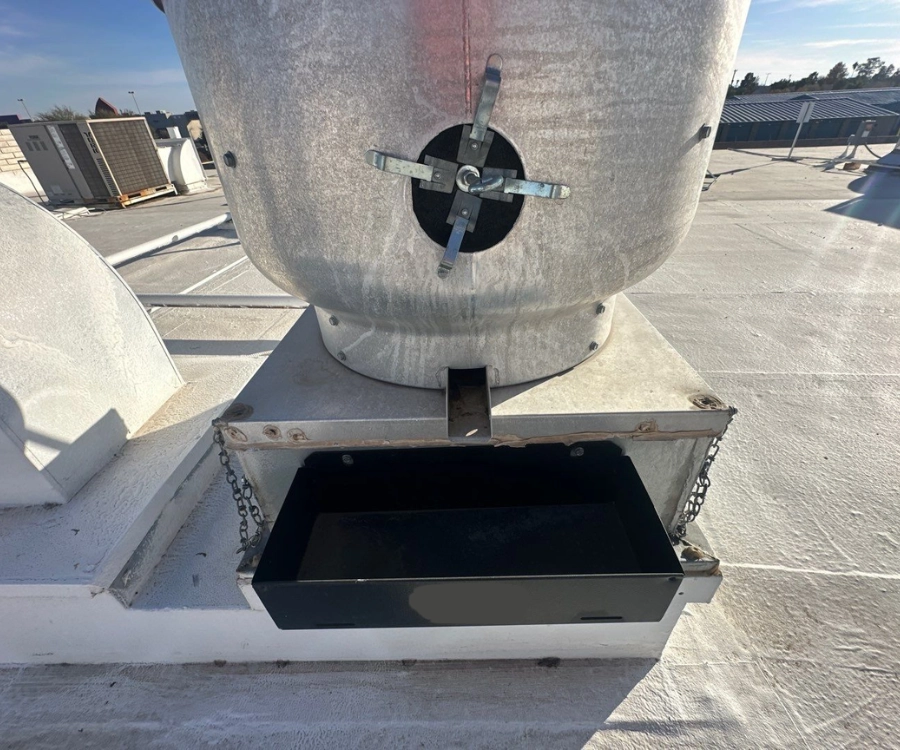
Think about it: every time a chef fries, sautés, or grills, excess grease is produced—grease that can lead to dangerous fires and costly repairs if not managed properly. From my own experience in the food industry, I’ve seen firsthand the chaos that can ensue from neglecting grease management.
Aside from fire hazards, a clogged exhaust system can disrupt operations and drain precious resources. That’s why understanding grease containment systems isn’t just helpful—it’s essential for any kitchen looking to operate safely and efficiently.
Grease containment systems serve a fundamental role in the safety and functionality of commercial kitchens. They are engineered solutions designed to capture, contain, and manage the grease that accumulates during cooking processes. Imagine running a bustling restaurant; with every meal you prepare, there's a likelihood that grease will escape into your kitchen’s exhaust system. This is where grease containment systems come into play, acting like sentinels protecting both your kitchen and customers from potential fire hazards.
At the core of these systems are components such as grease traps, interceptors, and grease boxes, which are strategically installed within kitchen exhaust ducts. Their purpose is straightforward: intercept grease before it can flow into drainage systems or build up in exhaust ducts—a buildup that could ignite at any moment, turning an ordinary cooking session into a calamitous event.
The importance of these installations cannot be overstated. According to the National Fire Protection Association (NFPA), approximately 29.3% of restaurant fires stem from improper grease handling and management. This staggering statistic serves as a reminder of the risks associated with neglecting grease containment measures. Understanding this reality prompts an essential question: can anyone genuinely afford to operate without a reliable grease containment system?
These systems are not merely recommendations; they are crucial safeguards against flammable materials that can become disastrous when left unchecked.
Aside from safety concerns, it is important to remember that grease accumulation can lead to expensive maintenance issues over time. When the exhaust system becomes clogged with residual grease, it forces your kitchen appliances to work harder, leading to unnecessary wear and tear and creating unexpected downtime for repairs—something every business owner dreads. By employing a grease containment system, you're investing in not just fire safety but also reducing long-term operational costs.
Regular inspections and maintenance of these systems cannot be overlooked either. Routine checks ensure everything functions properly and helps identify any potential issues before they become costly problems. For those seeking peace of mind, teaming up with a trusted company like Aim Hood Cleaning can streamline this process, ensuring your kitchen adheres to all local regulations while mitigating fire risks effectively.
Implementing effective grease containment systems is essential for managing fire safety in commercial kitchens. Not only do they help in preventing disasters caused by fire hazards linked to excessive grease accumulation, but they also contribute to the overall health and longevity of kitchen exhaust equipment.
As we consider the numerous benefits of these systems, it’s equally crucial to understand their broader implications for food service establishments. Let’s explore how critical these measures are for maintaining an efficient and safe culinary environment.
Commercial kitchens are dynamic environments where the hustle and bustle of daily operations lead to significant amounts of grease. It’s not just an inconvenience; it poses serious fire risks. According to data from the NFPA (National Fire Protection Association), over 70% of kitchen fires in restaurants stem from cooking equipment, but these fires often escalate due to accumulated grease. This reality highlights the crucial necessity of implementing effective grease containment systems.
Think of it like this: If you were trying to put out a wildfire with nothing more than a garden hose, you'd likely be overwhelmed and ineffective. Now, correlate that image to a restaurant without adequate grease containment; they could be valiantly trying to control a difficult situation with insufficient tools, placing their property—and lives—at tremendous risk.
To further underscore this point, consider the substantial reduction in insurance premiums many establishments experience after investing in grease containment systems. Not only do these systems safeguard against fires, but they also contribute to lower operational costs over time. In fact, a local restaurant owner in Wilmington mentioned, "Installing a grease containment system greatly reduced our fire department visits and kept our insurance premiums lower."
It's important to recognize that beyond fire safety, proper grease containment practices can also enhance overall kitchen operations. These systems minimize clogs and malfunctions in exhaust systems—factors that can lead to costly downtimes and repairs. By maintaining clean and efficient kitchen operations, establishments reduce unnecessary interruptions that would otherwise hurt their bottom line.
Investing in grease containment systems serves as an active strategy for safeguarding both your kitchen's functionality and safety. Continuing onward, we'll explore the specific installation requirements and compliance with local regulations.
Commercial kitchens have several options when it comes to grease containment, each serving specific needs based on kitchen size and volume of operations. Understanding these varieties helps in selecting the right device that aligns with your cooking styles and safety compliance requirements.
| Type | Description |
|---|---|
| Grease Traps | Smaller devices that trap grease before it enters the drainage system, ideal for low-volume operations where quick maintenance is convenient. |
| Grease Interceptors | Larger units suitable for high-volume kitchens designed to hold significant quantities of grease, thereby requiring less frequent cleaning. |
| Grease Boxes | Installed in kitchen exhaust systems to capture grease from hoods, essential for maintaining clean and safe ducts while preventing fire hazards. |
When you think about grease traps, picture a compact solution for your kitchen. These devices are efficient in smaller establishments such as cafes or bakeries, where they effectively catch excess grease before it clogs up the plumbing. Their low maintenance needs make them perfect for businesses that might not produce vast amounts of grease daily. Regular inspections ensure they remain functional without demanding considerable time or resources.
On the other hand, for bustling commercial kitchens with heavy frying operations, grease interceptors become indispensable. Sizes can vary greatly, but their primary function remains consistent: to handle larger quantities of grease and provide more space for settling before disposal. This means less frequent clean-outs—potentially saving both time and money over the long haul.
Then there are grease boxes, often overlooked yet crucial components in a well-functioning exhaust system. They operate silently behind the scenes, capturing greasy vapors from hoods during cooking processes. Imagine a packed restaurant with a busy kitchen; if this grease accumulates without proper management, not only does it lead to increased fire risk, but those clogged ducts can also result in costly repairs down the line. A well-maintained grease box contributes significantly to overall safety by providing an extra layer of defense against these fire hazards.
With this knowledge of the various grease containment solutions available to you, it's essential to explore how effectively managing this aspect can bolster overall kitchen functionality and safety.
Effectively managing grease is crucial for any commercial kitchen, not only for ensuring a safe work environment but also for enhancing overall efficiency. One of the greatest advantages is reduced fire risk. Grease fires are notorious for being quick to spark and difficult to extinguish; they can ignite in mere seconds if not properly contained. By implementing strict grease management practices, such as utilizing grease containment systems and conducting regular cleanings, kitchens can greatly reduce the likelihood of these dangerous incidents. According to the National Fire Protection Association (NFPA), proper grease management reduces the risk of kitchen fires by up to 40%. That’s a significant statistic that underscores the need for proactive measures.
However, the benefits don't stop with just lowering fire risk; effective grease management also aids in maintaining regulatory compliance. Most local health and fire codes mandate specific measures for how grease should be handled and disposed of, primarily to ensure that kitchens operate safely. Failure to comply with these regulations can result in hefty fines or even potential closure, which is something nobody wants to face. Adhering to these standards keeps your establishment running smoothly while reinforcing a reputation for reliability and professionalism among customers and inspectors alike.
Beyond safety and compliance, one must consider how managing grease leads to enhanced operational efficiency. Grease-free exhaust systems function much better than their greasy counterparts, leading to improved airflow and ventilation in the kitchen. This means less strain on equipment—translating to longer lifespans for hoods and fans—and decreased energy costs since cleaner systems require less power to operate efficiently. With systems running smoothly, there’s less maintenance downtime, allowing kitchens to focus more on serving customers rather than troubleshooting equipment issues.
Regular inspections coupled with meticulous cleaning schedules can prolong the lifespan and effectiveness of equipment used in commercial kitchens.
An effective grease management strategy not only mitigates risks but sets the stage for a safe, compliant, and efficient kitchen operation—a fundamental aspect that cannot be overlooked as we explore the next critical topic related to staying within legal guidelines.
Compliance with fire and health regulations serves as the backbone for operational safety in any commercial kitchen. Rules like those outlined by the International Fire Code (IFC) are designed to ensure that kitchens operate without risk. These regulations stipulate that accumulated grease must be regularly inspected and cleaned from cooking systems, particularly around exhaust hoods and ductwork. Ignoring these requirements could lead to dire consequences, from hefty fines to the dreaded temporary closure of your establishment, emphasizing that no commercial kitchen can afford to take these regulations lightly.
A business, after all, thrives on its ability to serve customers—not on the burden of unexpected regulatory repercussions.
To illustrate this point further, imagine a bustling restaurant packed with hungry patrons. The aroma of delicious food fills the air, but beneath it lies a hidden danger: excess grease buildup in the kitchen’s exhaust system. It only takes one spark for disaster to strike. Not only could this compromise the safety of staff and customers alike, but if an inspector arrives and finds unsafe conditions, you could face fines of up to $2,000—money that could be better spent enhancing your kitchen or customer experience.
Maintaining grease containment systems is paramount. Implementing regular checks creates an ongoing accountability measure—making sure you are always in line with current regulations. Scheduling monthly maintenance checks not only keeps your equipment in good shape but allows you to catch potential hazards before they become costly problems. Routine inspections ensure that your grease traps are functioning properly, minimizing the risk posed by uncontained grease buildup.
At High Tide Fire Protection, we understand how necessary compliance is to not just meet regulations but also protect your investment. By offering comprehensive compliance checks alongside our grease management services, we help take the stress off your shoulders. We handle necessary inspections systematically so that your team can focus on what matters most: running your business effectively while keeping it safe.
By fostering a culture of safety and ongoing compliance, you're setting yourself up for success in more than just avoiding fines. This proactive approach seamlessly transitions into strategies for effective upkeep and optimization of your operational setup.
Proper installation and consistent upkeep are crucial for grease containment systems to function optimally. When considering installation, it's important to assess your kitchen's layout and cooking volume. This ensures that you select the right system based on specific cooking methods used in your kitchen.
For instance, if you operate a high-volume restaurant with heavy frying, you'll need a more robust system compared to a small café that produces fewer greasy dishes. Just like a tailor measures fabric before cutting, consulting with professionals allows for careful design and proper placement of the grease containment system tailored to meet your unique operational needs.
Take time to meticulously plan this phase; neglecting it can lead to inefficiencies down the line. Think of it as laying a strong foundation for a house—the strength of everything that follows relies on this initial preparation. By including certified technicians in this process, you'll ensure compliance with local regulations and industry standards, ultimately leading to a smoother operation.
Moving on from planning to actual installation, always prioritize hiring certified technicians. Professional installation is not just a recommendation—it's essential to avoid future complications. Experienced technicians bring invaluable expertise, ensuring that components are correctly installed, connections are secure, and systems comply with health codes. Mistakes made during installation can lead to leaks or blockages that could create costly problems later on—not unlike building a house without ensuring its structure is sound.
Once your grease containment system is installed properly, regular maintenance is key. Similar to how we tend our cars with oil changes and tire rotations, your grease containment system requires periodic attention too. Setting up a routine maintenance schedule is essential; most high-volume kitchens should ideally plan for bi-monthly checks. These proactive inspections help detect wear and tear early on—any signs of damage or malfunction should be addressed immediately to prevent escalated issues.
Here are some tips for effective maintenance:
"After outsourcing our grease containment maintenance to Aim Hood Cleaning, we've seen improved safety and compliance," shared a local café owner.
Ensuring these steps come together forms a comprehensive approach toward safe and effective grease management in kitchens. This practice helps reduce potential hazards while improving overall efficiency in any food service establishment.
In summary, prioritizing proper installation and regular maintenance of grease containment systems is essential for kitchen safety and operational success.


Phoenix · Scottsdale · Mesa · Avondale · Peoria · Glendale · Buckeye · Surprise · El Mirage · Goodyear · Tolleson · Litchfield Park · Sun City · Sun City West · Tonopah · Waddell
Copyright © 2025 AimHoods.com | Aim Power Washing, LLC - All Rights Reserved.